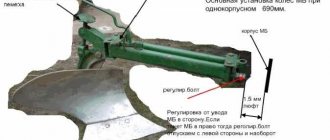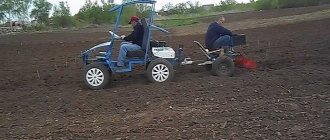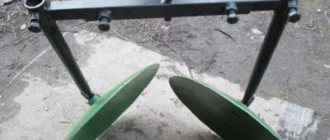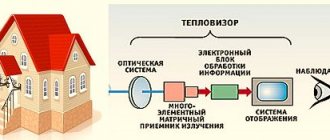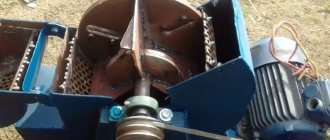Having bought a walk-behind tractor, its happy owner solves most of the problems associated with cultivating the site.
A rich set of attachments allows you not only to plow the soil efficiently, but also to cultivate it, harvest potatoes, clear snow and pump water.
You can always buy a trolley for a heavy walk-behind tractor, which will turn it into a mini-truck.
What should the owners of medium and small walk-behind tractors, which are not structurally suited for transporting goods and performing other “tractor” work, do?
One thing can be firmly said: you shouldn’t sit back and wait for a miracle. Anyone who understands the mechanics of cars can make many interesting cars out of a walk-behind tractor.
The feasibility of homemade products
Despite the fact that there is a greater variety of attachments on the market, they may not always be suitable for certain tasks.
And the price-quality ratio sometimes leaves much to be desired. Therefore, many gardeners make the necessary accessories for walk-behind tractors with their own hands. To do this, it is enough to have a drill, grinder and welding machine on hand, as well as have the skills to work with them. Only in individual cases, when more precise calculations and turning work are needed, do you have to turn to highly specialized specialists.
An advantage to homemade products is that at any disassembly site you can easily find the necessary component or assembly from an old car suitable for construction.
Mini bulldozer
You can turn a walk-behind tractor into a miniature bulldozer capable of leveling small areas or removing snow and debris by installing a shovel blade on it. For this, sheet metal with a thickness of at least 3 mm is used. The lower part of the shovel should be slightly bent forward in relation to the general plane, and a strip of thick rubber should be attached to it for snow removal or sheathed with tin (for excavation work). To strengthen the entire structure at the rear, it is necessary to weld several stiffening ribs from a metal corner.
Self-propelled rake
Despite the availability of factory-made rakes, many farmers prefer to make them themselves, taking into account the characteristics of their farm: the size of the meadow, the relief.
Metal pipes and hardened rods are used as materials for rakes. But as an option, you can use factory manual forks by welding them to the base. For ease of work, it is advisable to install small wheels or ski feet at the edges, which will relieve the load on the entire structure.
Why is this necessary?
At the moment, there are several types of mini-equipment for cultivating land:
- motor cultivators;
- walk-behind tractors;
- mini tractor.
Epiphany comes immediately after the owner of the cultivator realizes that his cultivator is only capable of loosening the soil with cutters, and it is impossible to use attachments while working on this unit for the following reasons:
- weak power;
- unreliable gearbox (reduction gear);
- no wheels.
However, the money for the purchase has already been spent. Therefore, the owner of the cultivator is faced with the question of whether it is possible to convert it into a walk-behind tractor .
Equipment for land cultivation
To cultivate the land, craftsmen have developed a number of devices that are superior in quality to factory products.
Most often, a do-it-yourself plow is used as a device for a walk-behind tractor, since factory prices are quite high. To make it, you should use sheet iron with a thickness of at least 4 mm, from which the knife itself and pipes with walls of the same size for the frame and fastening are cut directly.
Hiller
A device for hilling beds can be made from two metal disks.
They must be the same size with a diameter of at least 50 cm. It is advisable to pre-sharpen the edges of the disks for better soil sampling. Their fastening to the frame should be thought out so that it is possible to change the distance between the disks in accordance with the width of the bed.
You can also consider new versions of various devices that make the work of caring for a garden easier as homemade products for a walk-behind tractor :
Their drawings can be easily found on the Internet and taken as the basis for a future product.
From tractor to boat
The most common modifications from a conventional walk-behind tractor are all kinds of complex equipment and vehicles.
True, the latter can be more called homemade products based on the engine and transmission of the device. Potato planters . If there is a large area for planting potatoes, a device based on a walk-behind tractor would be ideal. It includes several elements at once. First of all, the potato planter is equipped with a small hopper for tubers.
In front of it is a plow that makes a ditch, and behind it is a hiller that fills and forms a bed. All devices must be adjustable in accordance with the planting depth and size of the beds.
Mini tractor . Most often, craftsmen construct all kinds of mini-tractors. In this case, the shift in the center of gravity of the equipment should be taken into account, since the engine is installed in the rear. Therefore, care should be taken to expand the wheelbase of the rear axle.
Currently, you can find on sale all kinds of components and assemblies for creating a tractor based on a walk-behind tractor, such as front axles, brake system, all kinds of rods and levers, pedals. But if you wish, you can make all this yourself, using suitable parts from old cars.
When using more powerful tires, such a tractor can easily turn into an all-terrain vehicle.
Boat motor . The engine from a walk-behind tractor can also be an ideal replacement for a conventional outboard motor. To do this, the necessary fastening should be made on the boat hull, and the standard engine cutter should be replaced with blades. In the right hands, a walk-behind tractor can also become the basis for creating a small buggy-type car. True, it will not be possible to drive in urban conditions - this is due to the official registration of the vehicle with the state traffic inspectorate. But it can be an excellent help in rural areas for fishing trips or hunting for mushrooms. Also, such an “SUV” is ideal for mastering driving skills for beginners.
Rules for driving a walk-behind tractor on public roads
This type of equipment is formally a smaller copy of a conventional tractor. As you know, a tractor is a vehicle, and to drive a vehicle you must have a driver's license and liability insurance. But does a similar rule apply to a walk-behind tractor? Of course, even if the answer to this question is positive, few would think of getting a license to drive across fields and beds. But there are often times when people use a walk-behind tractor to go to the nearest building materials store or simply go to throw out large garbage. Since the route will mainly run along public roads, there is a possibility of meeting a traffic inspector. In this case, the legal issue will be quite relevant.
How to make a walk-behind tractor from a cultivator
Cultivators and walk-behind tractors belong to agricultural machinery and act as indispensable assistants for the population of the private sector, as they are multifunctional and practical. Many people believe that a cultivator and a walk-behind tractor perform the same function and do not see a significant difference between them. The cultivator is intended only for soil processing, while the walk-behind tractor has wide functionality and is aimed at performing various works on a summer cottage. However, the heaviness of walk-behind tractors leads to rapid fatigue of people who use them to work on their plots. In this article we will tell you how to make a walk-behind tractor from a cultivator in order to greatly facilitate the work of land lovers.
Shredding branches using a walk-behind tractor
Often tree branches are thrown away and not even considered as fuel. But if you look at this issue from a more practical point of view, everything on the farm can be used profitably.
A branch chopper will be an excellent helper
, or a chipper, which also comes as an attachment to walk-behind tractors.
The branch chopper is suitable for processing garden trimmings, tree crowns, and wood waste.
Using this unit, you can harvest firewood without much physical effort. Recycled branches are used to make pallets - fuel pellets from wood waste used for heating.
Often, branch choppers are installed on heavy walk-behind tractors. The drive is carried out using one or two belts, which are connected to the front power take-off shaft on the engine.
Some models of such sheds have special tables and cones for chopping wood. Cutting tool – knife system.
Why do you need to modernize your cultivator?
The cost of a cultivator is several times lower than that of a walk-behind tractor, so many people prefer the first option. However, when performing various tasks with the ground, they are faced with the problem of low functionality of the cultivator, which is not oriented towards shallow digging of the soil or harvesting. Having design skills, you can solve this problem by converting the cultivator into a walk-behind tractor, while saving the family budget.
If you use attachments such as hillers, plows, and the like, then a reduction gear is extremely necessary. Because you need increased torque at low speeds. To do this, it is necessary to accelerate the engine to higher speeds, since the cultivator is designed to work with only one cutter and in order to provide the opportunity to install diverse attachments on it, it is necessary to make a walk-behind tractor from it. To get a low gear on the cultivator, it is advisable to install a special gearbox on it. Initially it seems that this is a complex technical device that can only be made in a factory using special equipment.
However, in fact, remaking a transmission mechanism that converts angular velocity into one or more mechanical gears with your own hands is not a difficult task.
First you need to establish yourself with the basic operational parameters of the power plant. The technical documentation indicates the number of revolutions of the crankshaft. This is the main value that is necessary for making calculations when converting a cultivator into a walk-behind tractor. To create a reduction gearbox for a cultivator you will need the following tools and materials:
- Bulgarian;
- welding machine;
- drill;
- sandpaper and drills;
- ruler;
- vice;
- hammer;
- metal sheet approximately 5 mm thick;
- pipe for fixing bearings.
The fastest models
First, let's find out which walk-behind tractors are considered the fastest? Do domestic manufacturers have advantages or does the palm unconditionally belong to foreign competitors?
By the way, it is quite difficult to determine the undisputed winner in terms of maximum speed, because not only are there a great many models of walk-behind tractors from various manufacturers today, but it is also possible to independently modernize this multifunctional agricultural unit.
For walk-behind tractors MTZ-05, MTZ-12
There are 4 speeds when moving forward and 2 in reverse. The minimum speeds correspond to the first gear; when switching to the next gear, it increases. For the above models, the minimum speed when moving forward is 2.15 km/h, when moving in reverse – 2.5 km/h; the maximum when driving forward is 9.6 km/h, when driving backwards – 4.46 km/h.
The walk-behind tractor "Mobil-K G85 D CH395" / Grillo
the maximum speed of forward movement is 11 km/h, reverse – 3 km/h. At the same time, the gearbox provides the ability to switch between three forward and two rear speeds. Don't forget that all these figures are true for unimproved models.
MTZ-05
MTZ-12
Mobile-K G85 D CH395" /Grillo
"Mobile-K Ghepard CH395"
– a Russian-made walk-behind tractor, has a 4+1 gearbox, can accelerate to 12 km/h.
Ukrainian walk-behind tractor "Motor Sich MB-6D"
can reach a speed of 16 km/h, six-speed gearbox (4+2).
Unit "Centaur MB 1081D"
Russian, but produced in Chinese factories. It is considered the fastest walk-behind tractor in the heavy class. Its maximum speed is as much as 25 km/h! Refers to diesel walk-behind tractors, unlike the models listed above - they run on gasoline.
Mobile-K Ghepard CH395
Motor Sich MB-6D
Centaur MB 1081D
Gearbox installation
The basic element of the stroke reducer being created for a cultivator is the body. The quality of the entire mechanism, the mutual arrangement of the axes and shafts, and the single center of rotation of the bearings directly depend on it. In our case, the body will be made of metal sheet by welding. To simplify the procedure for servicing the component parts of the gearbox, one of the walls must be made removable. The bearings and their precise boring are supported by pieces of pipe whose inner diameter coincides with the outer diameter of the bearing. After the trimmings are fixed in the desired position, they are thoroughly secured by welding.
For the manufacture of shafts, a rod with a round cross-section made of high-quality steel is used. The workpiece is machined to the required parameters and the shaft is given the desired shape. During operation, the shafts rotate together with the sprockets, transmitting torque through the chain and keys. The shafts are supported by bearings, which take on significant loads during excavation work. The service life and performance of the created gearbox will largely depend on how correctly the bearings were selected. The best option would be to use closed radial bearings, which require little maintenance. Sprockets and chain can be purchased or used from decommissioned equipment.
The sequence of assembling a reduction gearbox for a motor cultivator:
- Cutting a metal sheet into component parts of the body and cover.
- Pipe cutting.
- Installation of bearing seats.
- Manufacturing of the body.
- Coating the body and lid with paint and varnish.
- Mounting bearings.
- Mechanical processing of shafts.
- Installation of shafts with simultaneous installation of sprockets and chain.
- Securing the housing cover.
After the manipulations have been performed, the converted mechanism is installed on the cultivator frame and sea trials of the cultivator are carried out. The use of a homemade gearbox increases the power of the equipment and makes it possible to expand its scope.
Trencher in action
The operation of the unit is simple: after starting the cutting mills, digging a trench begins.
Next, the chassis drive is started, which causes the device to move, and the auger or blade shovel moves the excavated soil on the surface away from the clearing. Of course, a homemade device for digging a trench with a walk-behind tractor makes the work easier, saves time, effort, money, and turns ditch digging into a routine procedure.
What is needed and how can it be changed
In fact, putting a motor cultivator on wheels is not at all difficult:
- First, you need to carefully measure the fit dimensions of the output shaft, paying special attention to its shape (cylinder or hexagon), outer diameter and distance to the hole for the cotter pin.
- Then you need to visit the nearest gardening store or look online to order hubs (differential amplifiers) that match the dimensions of the cultivator shaft.
- At the same time, you can purchase wheels (the smaller the diameter, the better) for your future walk-behind tractor. By the way, wheels with hubs and drawbar are often sold in a single set, which is very convenient.
- We screw the purchased wheels to the hubs;
- We remove the cutters from the motor-cultivator shaft;
- We install the wheels on the gearbox shaft.
Experts do not recommend upgrading low-power cultivators weighing up to 45 kilograms and equipped with a worm gear in this way, as this modification can lead to serious damage. In addition, when converting a motor-cultivator into a walk-behind tractor, you should not use old car wheels (too much weight and size).
At the same time, it is worth understanding that a cultivator on wheels, the modification of which will require at least three thousand rubles, may be a walk-behind tractor, but not quite a full-fledged one. Of course, such equipment will be able to move independently, but serious problems can arise with the use of attachments if the cultivator’s motor is weak (less than 6 hp) and the reduction gear is of a worm type, rather than a gear, belt or chain type.
Therefore, the next stage of converting the cultivator into a walk-behind tractor should be replacing (if necessary) the gearbox. The cost of this part in stores is comparable to the price of a new cultivator. However, you can try to make a simple gearbox with two opposite shafts at home, if the owner of the cultivator has the skills of a good mechanic/designer and has:
- measuring instruments (ruler, caliper);
- spare parts and consumables (bearings, gears, belts or chains, pulleys, shafts, gaskets, seals, pipe for bearings, bolts, etc.);
- welding machine;
- drill and drill bits of different diameters;
- “grinder” or hacksaw for metal;
- set of screwdrivers and vice.
If all this is available, then you can start manufacturing the gearbox:
- We draw or search on the Internet for a suitable sketch and calculate the gear ratio, taking as a basis the number of engine idle speeds plus 10%.
- We cut a metal sheet with a thickness of at least 5 mm to obtain a blank for the lid and body of the future part.
- We cut the pipe and, using welding, install the seats for the bearings.
- We assemble the body and protect it with paint and varnish.
- We install bearings.
- We produce and process shafts from round steel bars.
- We install shafts with the simultaneous installation of sprockets or pulleys, chains or belts.
- We make a gasket between the body and the cover, and also insulate the shafts using seals.
- Fill the housing with lubricant (oil) and install the cover.
- We place the homemade gearbox on the cultivator frame and connect it to the engine via the output shaft.
- We adjust the operation of the gearbox with the engine turned on, but without any special loads, so that the parts can be worn in.
Is it possible to install an Oka muffler on a Buran? | Topic author: Kipawa
Men, please tell me, is it possible to install an Oka muffler on a Buran without any special modifications, and how much quieter will it be?
Alexander (Alaba) is in the garage as is, how can I adapt it? I'm sure it will work quieter
REVIEW OF THE MOLE CULTIVATOR CONVERTED INTO A MOTOR-BLOCK.
Vanka (Ballou) Vladimir, I recently installed an Okovsky muffler, it took the place of the old one, but right up to the starter handle, in the hood it was cut under the exit, at first it was fine, quieter than the original one, but after 15-20 km it burned out and began to scream louder than before ( the metal is weak, it looks like a piece of it is flopping around inside), besides, ice is freezing under my right foot, I feel discomfort, my foot slid on the ice a couple of times during sharp maneuvers, you even get scared! in short, this is of no use. So I’m thinking of welding the muffler on my own, like this, but I’m afraid that it will quickly become clogged with oils and slags, because
Vladimir (Urvi) Vanka, thank you, I’ll probably give up this idea too
Marat (Linette) I also have a new muffler from Oka. I wanted to test install it, a neighbor who is very experienced in snowmobiles said, don’t install it, it’s strangling the engine. I installed a resonator.
Evgeny (Acala) Well, I don’t know, I installed it from the classics and the sound is pleasant, only the variator rattles. (not heard before
Tags: How to convert a cultivator into a walk-behind tractor video
DIY hand cultivator
With the onset of spring, summer residents and owners of garden plots have a lot of work, because before planting garden crops, soil cultivation is required. The most difficult work is considered to be digging and loosening the site . For this purpose, most summer residents use an ordinary shovel, but such work takes a lot of time and effort. Fortunately, there is a more effective device - a cultivator. With its help, you can complete a large amount of work in a short period of time. You can buy a device or make a manual cultivator with your own hands, saving a lot of money.
DIY hand cultivator
Does it work
In fact, converting a cultivator into a walk-behind tractor will require the owner to spend significant money and time with an unclear result. Therefore, it is better for summer residents and gardeners to decide at the purchasing stage why they need mini-equipment for cultivating the land, and only after that make the final choice.
Sources:
https://motochas.com.ua/catalog/navesnoe-oborudovanie/kultivatory-na-mototraktora/ https://tehnopanorama.ru/sadovaya/prevratit-kultivator-v-motoblok-realno-ili-net.html
More about the device
The most popular are small designs whose weight does not exceed 20 kg. They are very productive and compact, and with the help of such products you can perform various tasks on the site: removing weeds, loosening the soil and even applying various fertilizers. A hand cultivator will also be useful when caring for some plants, as it is capable of loosening the soil near the beds, thinning and hilling them.
Small hand cultivators are popular
Note! Of course, you cannot compare a hand-held cultivator in terms of power with a walk-behind tractor, but for basic tasks in a garden plot it is quite enough. The advantages of hand tools include the absence of fuel or electricity costs, as well as the ability to use them in hard-to-reach places.
Such a cultivator cannot be compared in power to a walk-behind tractor.
The design of most types of cultivators includes special cutters, which, moving around the site, loosen the soil. Other attachments can also be used:
- paws for loosening the soil;
- a special sock that loosens and cuts the soil, thereby removing weeds;
- hiller for creating small grooves in the soil, which are needed for sowing various crops;
- needle disk , which is used when a large crust forms on the soil surface;
- feeding knives with special dispensers . They are necessary for applying fertilizers to the soil.
Product range
- PE Kryuchkov;
- Bukovinka;
- PE "Korund".
The offered models of agricultural equipment are of good quality, reliability and durability.
Harrow for walk-behind tractor
walk -behind harrow is a type of passive attachment that is used in conjunction with motor-tractors and walk-behind tractors for tillage. The harrow performs its assigned functions efficiently and effectively. In the agricultural industry, it is used for soil treatment after harvesting or before sowing.
- rotary;
- toothed;
- disk
Rotary harrows are equipped with diesel or gasoline walk-behind tractors equipped with an air cooling system. The device consists of 2 sections, which are installed on the walk-behind drive shaft on 2 sides. During operation, discs and transverse rods ensure cutting and crushing of large pieces of soil. This allows you to level the soil surface and prepare it for sowing crops. The harrowing procedure makes it possible to minimize the loss of moisture from the soil.
READ How to redo the ignition on an agro walk-behind tractor
Toothed harrows combine well with different types of walk-behind tractors. The device is installed at the rear, to the trailer of a motor-tractor, heavy or light walk-behind tractor. The harrow has a simple design and is characterized by high efficiency. It is used for deep loosening of soil and high-quality removal of weeds.
The disc harrow is equipped with motor tractors with an engine power of 12 hp or more. The device is used to harrow the soil in order to level the surface and retain moisture in the soil layer. Disc harrows prepare the land for sowing crops. Such equipment is represented by mounted and trailed models.
converting a motor cultivator into a walk-behind tractor
Cultivators for walk-behind tractors
- “Hedgehog” on “bukovinka” bearings;
- “Hedgehog” section (P);
- “Hedgehog” (lightweight);
- For motor tractor (KMO-1.2);
- "Hedgehog" economy (section);
- single-section weeder (KPR).
Advantages of cultivators from our catalog:
- wide scope of application;
- high level of productivity;
- acceptable prices;
- long service life.
The “Hedgehog” double-sided cultivator for a walk-behind tractor will be useful for those who are looking for a high-performance device for cultivating soil. The peculiarity of this motor cultivator is that it processes 2 rows at once, which significantly simplifies the process of caring for agricultural crops. The cultivator can be equipped with motor tractors and walk-behind tractors. The mechanism is suitable for loosening the soil, weeding, and hilling potato plantings. Hedgehog-type cultivators have a function for adjusting some operating parameters, namely, loosening depth and row spacing.
Types of cultivators
The classification of devices is carried out depending on the mechanisms used. Cultivators are shared with the following equipment.
- Electrical . Mainly used for processing large areas. The device can only operate if there is a source of electricity. The design is lightweight and compact in size; moreover, such devices do not pollute the atmosphere with harmful substances.
Electric cultivator DAEWOO
- Rechargeable . This type of equipment is used to work in small areas. The advantages of battery-powered cultivators include high mobility and small dimensions.
- Gasoline. Another type of equipment that is considered one of the most common among summer residents. It has high performance, good mobility, and is easy to use. But such devices must be properly maintained, not to mention polluting the atmosphere with harmful substances. Hyundai petrol cultivator Mechanical. It is no secret that hand cultivators are very easy to use, they do not take much time and effort, and are also low in cost. There are several types of designs of hand cultivators, starting with a simple “Tornado” cultivator, which is an ordinary fork with curved fingers on the bottom, and ending with a flat cutter. Hand cultivator
The advantages of hand cultivators also include the fact that they are easy to make yourself. This does not require special skills, just follow the recommendations. To make a particular design, you need the correct drawing of the product, a little free time, patience and, of course, some tools and materials.Hand cultivator "Gnome"
DIY flower pots
In our new article, we share the best flower pot ideas! The most original and beautiful options, step-by-step manufacturing instructions, useful tips - all this can be found in this article!
What do you need for work?
To make various devices for soil treatment at home, you need to prepare special materials for this. First of all, you need to take care of getting steel. The more different pipes, sheets or metal rods you have, the better. You can’t do without a set of tools, but they are present in any garage, so you don’t have to bother finding them.
When working with metal pipes, you cannot do without special tools.
A welding machine is one of the most important tools for working with metal products. With it, you can connect different parts made of metal in just a few seconds. Of course, in most cases you can do without a welding machine by connecting the parts using self-tapping screws. But the quality of such connections cannot be compared with the quality of welds.
Inverter welding machine
Assembly of hand cultivators
Once you have prepared everything you need for work, you can begin making a hand cultivator. This is a unique product that has a number of advantages, for example, compactness, availability of materials for its manufacture and the efficiency of the finished cultivator.
Manual soil cultivator
A homemade cultivator will make it possible not only to remove weeds throughout the entire area, but also to thoroughly loosen the soil. But, as noted earlier, hand cultivators are not intended for large areas , so if your garden or vegetable garden has a large area, then it makes sense to purchase a gasoline cultivator. Manual structures are best suited for country work. At home, you can make such types of hand cultivators as rotary, disk, flat cutter and others.
Cultivator-weeder: 1 — wheel assembly (from a garden cart), 2 — main frame, 3 — spring, 4 — chain lock, 5 — hook, 6 — U-shaped rotary handle assembly, 7 — Ml2 fixing screw with hexagon head (3 pcs.), 8 — rotating bracket, 9 — weeder frame (steel strip 20×7), 10 — mounted raker (steel chain from a rod with a diameter of 10), 11 — 15-star weeder-clump breaker (from agricultural machinery), 12 — M10 nut with lock nut and washer (2 pcs.), 13 — rotating cultivator arm (from agricultural machinery, modified), 14 — axle bolt with nut and washers (2 pcs.), 15 — M14 bolt with nut (2 pcs.) .).
Rotary cultivator
The main tasks of the rotary structure are to harrow the soil and further level it. The cultivator consists of special hemispherical disks in the amount of 2 or 4 pieces. Each pair of these disks is attached to an axis, due to which the base of the structure can move. This allows you to increase or decrease the angle of inclination of the disks during operation.
Diagram of a rotary disk cultivator
The base must be metal, since it is subject to a large load during operation. The base itself can be attached to the handle. If all the parts are made of metal, this will significantly increase the weight of the structure, which is why many summer residents make handles from wood. When working, grass will not cling to the discs of such a cultivator, which is very convenient, especially when cultivating areas covered with weeds.
Lightweight DIY cultivator Disc rotary cultivator
Cultivator "Tornado"
An excellent cultivator with the simplest design, consisting of only three parts - a submersible element, a handle and a handle . In many ways, the principle of operation of a cultivator is similar to the operation of a corkscrew. You need to press the structure into the ground and rotate it, and then the cultivator can be lifted. During the treatment of the site, weeds are removed along with the root system. The product can easily be made at home if you follow the step-by-step instructions below.
"Tornado" - manual cultivator
Table. Manufacturing of the Tornado cultivator.
